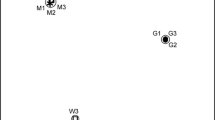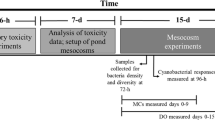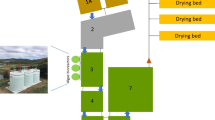Abstract
Background, Aims and Scope
Microcystins (MCs) are a family of natural toxins produced by cyanobacteria (blue-green algae). As a result of eutrophication, massive cyanobacterial blooms occur more frequently and MCs represent important contaminants of freshwater ecosystems. Bacterial biodegradation is considered a main mechanism for MC breakdown in environmental conditions. While existing studies were mostly focused on MC biodegradation by planktonic bacteria, our experiments examined the fate and kinetics of MC degradation in river-originated phototrophic biofilms and investigated factors influencing the rate of MC removal.
Methods
The fate of dissolved MCs was studied in laboratory microcosms with different composition (containing water only, water with phytoplankton and/or phototrophic biofilms). Biofilms originated from river ecosystem were pre-incubated under various conditions (with/without presence of cyanobacterial biomass or model organic substrates: glucose and protein - casein). Changes in MC concentration (0-14 days) in water columns were measured by HPLC DAD after external additions of purified MCs (160 µg L-1, MC-LR and MC YR), and halftimes (t1/2) of MC removal were estimated.
Results and Discussion
The slow degradation of MC was revealed in tap water (t1/2 ~ 14 days) and river water without cyanobacteria (t1/2 ~ 8 days). Enhanced removal occurred in the presence of natural planktonic cyanobacteria (t1/2 ~ 44 h), most probably due to microorganisms associated with the biomass of cyanobacterial bloom. More rapid MC elimination occurred in the variants containing phototrophic biofilms, and was particularly pronounced at those biofilms pre-cultivated in the presence of cyanobacterial blooms (t1/2 ~ 20 h). Much slower removal was observed in the variants simulating possible substrate-dependent induction of microorganism metabolism (biofilms pre-incubated with glucose: t1/2 ~ 35 h, and casein: t1/2 ~ 80 h). After termination of experiments, total amounts of MCs accumulated in the biofilms were below 5% of the initial toxin level revealing significant biodegradation processes.
Conclusion
The microcosm studies contributed to understanding of the environmental fate of MCs and revealed a rapid biodegradation by phototrophic biofilms. The rate of MC elimination depends on history of biofilm community, previous contact with cyanobacteria seems to be a selective factor improving the biodegradation potential.
Recommendation and Outlook
Our results experimentally showed a positive role of biofilms in MC elimination during water treatment processes such as bank filtration or slow sand filtration, and could eventually serve for further research of biofilm-based technological applications for MCs removal in small-scale drinking water treatment facilities.
Similar content being viewed by others
Author information
Authors and Affiliations
Corresponding authors
Rights and permissions
About this article
Cite this article
Babica, P., Blaha, L. & Marsalek, B. Removal of Microcystins by Phototrophic Biofilms. A Microcosm Study (6 pp). Env Sci Poll Res Int 12, 369–374 (2005). https://doi.org/10.1065/espr2005.05.259
Received:
Accepted:
Published:
Issue Date:
DOI: https://doi.org/10.1065/espr2005.05.259




